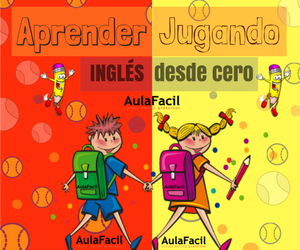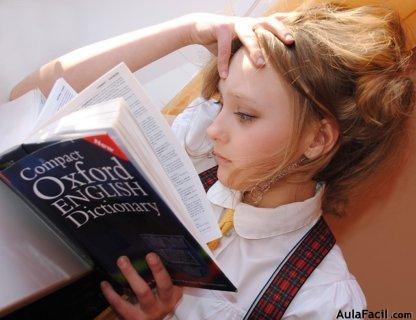Paper 3 (Use of English) - Part 2 (Gap Fill)
Lesson 13 - Paper 3 (Use of English) - Part 2
In Part 2 of Paper 3, you have to read an article and fill in the gaps with a word that you think best fits each gap. You can only insert one word in each gap.
This part focuses on the following areas:
- · Articles (the, a, an)
- · Pronouns (it, those, who, etc.)
- · Determiners (those, whose, this, its, another, other, etc.)
- · Auxiliary and modal verbs (may, might, can, could, etc.)
- · Multi-word verbs (to look forward to, etc.)
- · Conjunctions (as well as, etc.)
- · Prepositions (in, at, on, etc.)
The article is typically 200 words and there are 12 gaps. You have 10 minutes to complete this task.
Before carrying out an exam type question, you are going to do some exercises which practise the use of articles, pronouns and determiners.
A. Articles (definite and indefinite)
Add either a, an or the to the following sentences. Sometimes an article is not necessary. In this case, leave the gap empty.
- _____ Guardian is _____ newspaper which is published every day in _____ UK.
- In 2002, _____ euro was introduced in many European countries.
- In _____ north of Spain, the weather is cooler and more varied than the weather found in places like _____ Malaga and _____ Cadiz which are in _____ south.
- _____ cheetah is _____ world’s fastest animal.
- _____ president of _____ United States lives in Washington D.C. in _____ White House.
- _____ British are renowned for shaking hands when they meet someone for the first time whereas _____ Spanish often give two kisses.
- Her mum is _____ teacher at _____ University in central London.
- My brother lives in _____ old house in _____ Bury St Edmunds. There are three floors and his bedroom is on _____ second floor.
- Would you like to see _____ painting of _____ house that I used to live in when I was _____ child?
- London is _____ capital of _____ England.
B. Pronouns (it, one, which, that, every, them, those, these, etc).
Fill in each gap with an appropriate pronoun. Read each sentence first before trying to fill in the gap.
- He had been decorating the house for months because he wanted _____ to be perfect.
- Pablo Picasso is _____ of the most famous artists from Spain.
- Buckingham Palace, _____ is the home of the Queen of England, was built in 1702.
- How was _____ possible that no one saw the mean steal Lucy’s handbag?
- Caroline was the first person to arrive at the wedding, after her _____ else arrived but I didn’t recognise them.
- Alex forgot _____ he had to buy from the supermarket and so rang his wife to check.
- After finishing the exam, Sam found _____ too difficult to speak about.
- James didn’t know _____ about the surprise party.
- The picture, in _____ the famous couple can be seen arguing, was a big internet hit.
- He knew _____ had happened as everyone was acting strange around him.
C. Determiners
Fill in each gap with an appropriate determiner. Read each sentence first before trying to fill in the gap.
- The Italian restaurant we went to last night sells _____ type of pizza imaginable.
- Unfortunately, the boys can’t be in the same room together as they hate _____ other.
- We didn’t have _____ time to look around the shops but I did manage to buy a couple of t-shirts.
- The lottery win gave him _____ much money and he didn’t know what to do with it.
- James was so hungry after the race that he ate _____ of the pie himself!
- We _____ have our own ideas about how the world began but who is right?
- We missed the train to London but luckily we didn’t have to wait long as there’s a train _____ ten minutes.
- _____ people came to see the football match. It was disappointing for the players.
- Dan immediately got annoyed with Josh and Lauren as he’s got _____ patience with children.
- There were a _____ volunteers but not as many as they would have liked.
Video – Exam advice (Video 13.1)
Listen to your teacher give you some advice about how to carry out Part 2 of Paper 3. She is going to mention 7 separate points.
Make some notes.
1. ________________________________
2. ________________________________
3. ________________________________
4. ________________________________
5. ________________________________
6. ________________________________
7. ________________________________
D. Exam type question
Now complete, the exam type question.
Food in the UK
(1)_______ person that visits the UK has mixed feelings about the food here. (2)_______ year round, you find pubs selling traditional English food from fish and chips, roast dinners to steak and mushroom pies. But, do (3)_______ truly represent what (4)_______ English eat?
Over the years, the UK has adopted foods from (5)_______ different cultures. In fact, in most high streets across the UK, we can find Indian, Chinese, Italian and sometimes even Greek or Thai restaurants. The food in the UK has (6)_______ diverse.
As (7)_______ result of the mixture of cultures, many British families now find (8)_______ cooking a wider variety of culinary recipes (9)_______ adopt flavours from Indian, Chinese and Italian cooking.
A lot of foreigners think that the UK does not have (10)_______ own food, but the truth is that our food is changing. The traditional steak and mushroom pie although consumed less, is still sold throughout the country and (11)_______ shows no signs of disappearing. People are use now used to eating a wider variety (12)_______ foods from a number of different countries.
Answers
A.
- the, a , the
- the
- the, -, -, the
- the, the
- the, the, the
- the, the
- a, a
- an, -, the
- a, the, a
- the, -
B.
- It
- One
- Which
- It
- Someone
- What
- It
- Anything
- Which
- Something
C.
- every
- each
- much
- too
- all
- all
- every
- few
- little
- few
D.
1. Every
2. All
3. They
4. The
5. Many
6. Become
7. A
8. Themselves
9. Which
10. Their
11. It
12. Of

